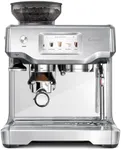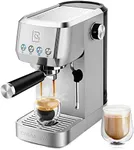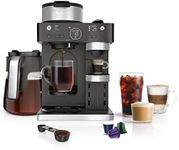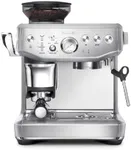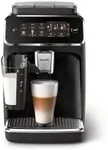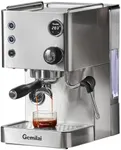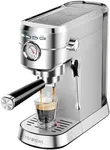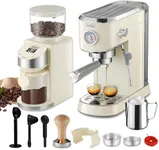Buying Guide for the Best Home Espresso Machines
Choosing the right home espresso machine can be a delightful yet daunting task. The perfect machine for you will depend on your coffee preferences, how much effort you're willing to put into making your coffee, and the features you value most. Understanding the key specifications and how they align with your needs will help you make an informed decision and ensure you enjoy your espresso experience at home.Type of MachineHome espresso machines come in various types: manual, semi-automatic, automatic, and super-automatic. Manual machines give you full control over the brewing process but require more skill and effort. Semi-automatic machines automate some steps but still allow for personal input. Automatic machines handle most of the process, making them easier to use. Super-automatic machines do everything from grinding the beans to frothing the milk, offering the most convenience. Choose based on how much control you want and how much effort you're willing to put in.
PressurePressure, measured in bars, is crucial for extracting the perfect espresso. Most machines operate at 9 bars, which is considered the ideal pressure for a good espresso. Machines with higher pressure can offer more consistency and better extraction. If you're a casual drinker, a machine with 9 bars will suffice. For those who want a more professional experience, consider machines with higher pressure capabilities.
Boiler TypeThe boiler heats the water for brewing and steaming milk. Single boilers can only do one task at a time, while dual boilers can brew and steam simultaneously, saving time. Heat exchange boilers offer a middle ground, allowing for simultaneous brewing and steaming but with some limitations. If you often make multiple drinks or entertain guests, a dual boiler or heat exchange boiler might be more suitable. For occasional use, a single boiler is usually sufficient.
GrinderSome espresso machines come with built-in grinders, while others require a separate grinder. Freshly ground coffee beans make a significant difference in taste. Built-in grinders offer convenience and save counter space, but they may not be as high-quality as standalone grinders. If you value convenience and have limited space, a machine with a built-in grinder is a good choice. If you're a coffee enthusiast who wants the best possible grind, consider investing in a high-quality standalone grinder.
Milk FrothingIf you enjoy milk-based drinks like lattes and cappuccinos, the milk frothing capability is important. Machines come with different frothing options: manual steam wands, automatic frothers, or no frothing capability at all. Manual steam wands offer the most control but require practice. Automatic frothers are easier to use but offer less control. If you rarely make milk-based drinks, this feature might not be as important. For frequent latte or cappuccino drinkers, consider a machine with a good frothing system.
Water Reservoir SizeThe size of the water reservoir determines how often you'll need to refill it. Larger reservoirs are convenient for making multiple drinks without frequent refills, while smaller ones are more compact and suitable for limited counter space. If you make several cups a day or entertain guests often, a larger reservoir will be more convenient. For occasional use or limited space, a smaller reservoir should suffice.
Ease of CleaningRegular cleaning is essential for maintaining the quality and longevity of your espresso machine. Some machines have self-cleaning features or removable parts that make cleaning easier. Consider how much time and effort you're willing to spend on maintenance. If you prefer low-maintenance options, look for machines with easy-to-clean features. For those who don't mind a bit of extra work, more complex machines might offer better performance.


